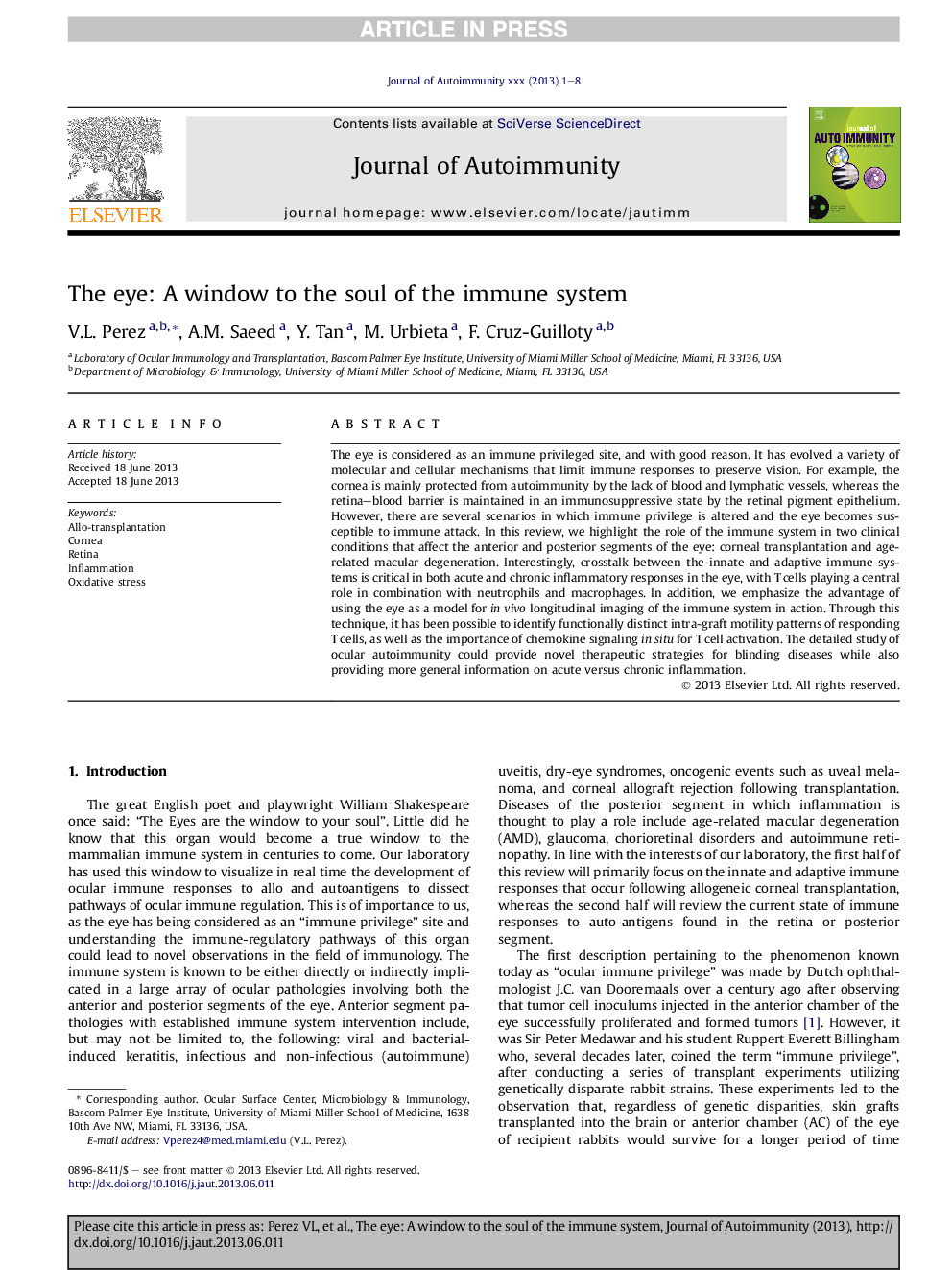| Article ID | Journal | Published Year | Pages | File Type |
|---|---|---|---|---|
| 6119315 | Journal of Autoimmunity | 2013 | 8 Pages |
Abstract
The eye is considered as an immune privileged site, and with good reason. It has evolved a variety of molecular and cellular mechanisms that limit immune responses to preserve vision. For example, the cornea is mainly protected from autoimmunity by the lack of blood and lymphatic vessels, whereas the retina-blood barrier is maintained in an immunosuppressive state by the retinal pigment epithelium. However, there are several scenarios in which immune privilege is altered and the eye becomes susceptible to immune attack. In this review, we highlight the role of the immune system in two clinical conditions that affect the anterior and posterior segments of the eye: corneal transplantation and age-related macular degeneration. Interestingly, crosstalk between the innate and adaptive immune systems is critical in both acute and chronic inflammatory responses in the eye, with T cells playing a central role in combination with neutrophils and macrophages. In addition, we emphasize the advantage of using the eye as a model for in vivo longitudinal imaging of the immune system in action. Through this technique, it has been possible to identify functionally distinct intra-graft motility patterns of responding T cells, as well as the importance of chemokine signaling in situ for T cell activation. The detailed study of ocular autoimmunity could provide novel therapeutic strategies for blinding diseases while also providing more general information on acute versus chronic inflammation.
Related Topics
Life Sciences
Immunology and Microbiology
Immunology
Authors
V.L. Perez, A.M. Saeed, Y. Tan, M. Urbieta, F. Cruz-Guilloty,
